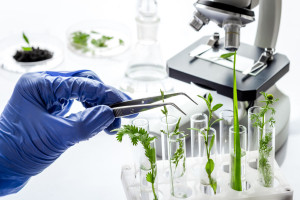 In the realm of modern agriculture, a pivotal shift is underway as the industry leans increasingly towards sustainable practices. At the forefront of this transformation are biological agrichemicals, a sector experiencing rapid growth and innovation. According to industry insights from AgriBusiness Global, companies like BioConsortia are expanding into new markets like Brazil and launching biologicals for row crops, signaling a broader global trend towards these sustainable solutions.
In the realm of modern agriculture, a pivotal shift is underway as the industry leans increasingly towards sustainable practices. At the forefront of this transformation are biological agrichemicals, a sector experiencing rapid growth and innovation. According to industry insights from AgriBusiness Global, companies like BioConsortia are expanding into new markets like Brazil and launching biologicals for row crops, signaling a broader global trend towards these sustainable solutions.
The Growing Appeal of Biologicals
Biological agrichemicals, often derived from natural materials or bio-engineered processes, are capturing the attention of farmers and producers worldwide. Their appeal lies not just in their environmental credentials but also in their efficacy in enhancing crop health and yield. For instance, recent discussions with BioConsortia CEO Marcus Meadows-Smith shed light on how advancements in microbial technologies are enabling the development of more targeted and effective biological treatments for a range of crop diseases and pests.
Innovation at the Core
Key drivers of this sector’s growth include advancements in biotechnology and a deepening understanding of plant microbiomes. Companies are leveraging artificial intelligence (AI) and machine learning (ML) to sift through vast data sets, identifying potential biological compounds that can protect crops from pests and diseases more naturally and safely than traditional chemical pesticides. Enko, for example, is an industry leader utilizing AI and ML technology to unearth new crop protection solutions that are both effective and environmentally friendly.
Evidence-Based Benefits
The impact of biologicals extends beyond just crop protection. As James Maude from Acadian Plant Health explains, incorporating sustainable agricultural practices contributes significantly to overall ecosystem health. Data-driven approaches, as emphasized by Kynetec’s An Segers, are providing the agricultural industry with the insights needed to navigate the complexities of adopting these newer biological solutions effectively.
The Future of Biological Controls
Biological controls, as discussed by Biotalys CEO Patrice Sellès, represent a particularly promising area within the broader biological agrichemical space. These naturally occurring agents can be used to manage agricultural pests in a way that reduces environmental impact and promotes biodiversity. This aligns with the increasing demand from consumers for sustainably produced food, driving further interest and investment in biological research and development.
Navigating Challenges and Opportunities
The transition to a more biologically-focused agrichemical industry is not without its challenges. Regulatory hurdles, scalability of solutions, and the need for continued investment in R&D are significant considerations. However, the opportunities presented by biological agrichemicals for sustainable agriculture are immense. Reports of Syngenta Group achieving $32.2 billion sales, with a portion of this success attributed to innovative crop protection products, underscore the financial viability and market demand for advanced agricultural solutions, including biologicals.
The shift towards biological agrichemicals is a clear indicator of the agricultural industry’s commitment to sustainability and innovation. Companies like UPL are leading the charge, investing $1.75 million in agtech innovators, further solidifying the importance of biologicals in future agricultural practices. As we continue to confront global challenges such as climate change and food security, the role of biological agrichemicals in fostering a sustainable, productive agricultural landscape becomes ever more critical.
In sum, the evolving landscape of biological agrichemicals represents a harmonious blend of science, sustainability, and the age-old art of farming. It heralds a future where agriculture not only feeds the world but does so in a manner that preserves the planet for generations to come.